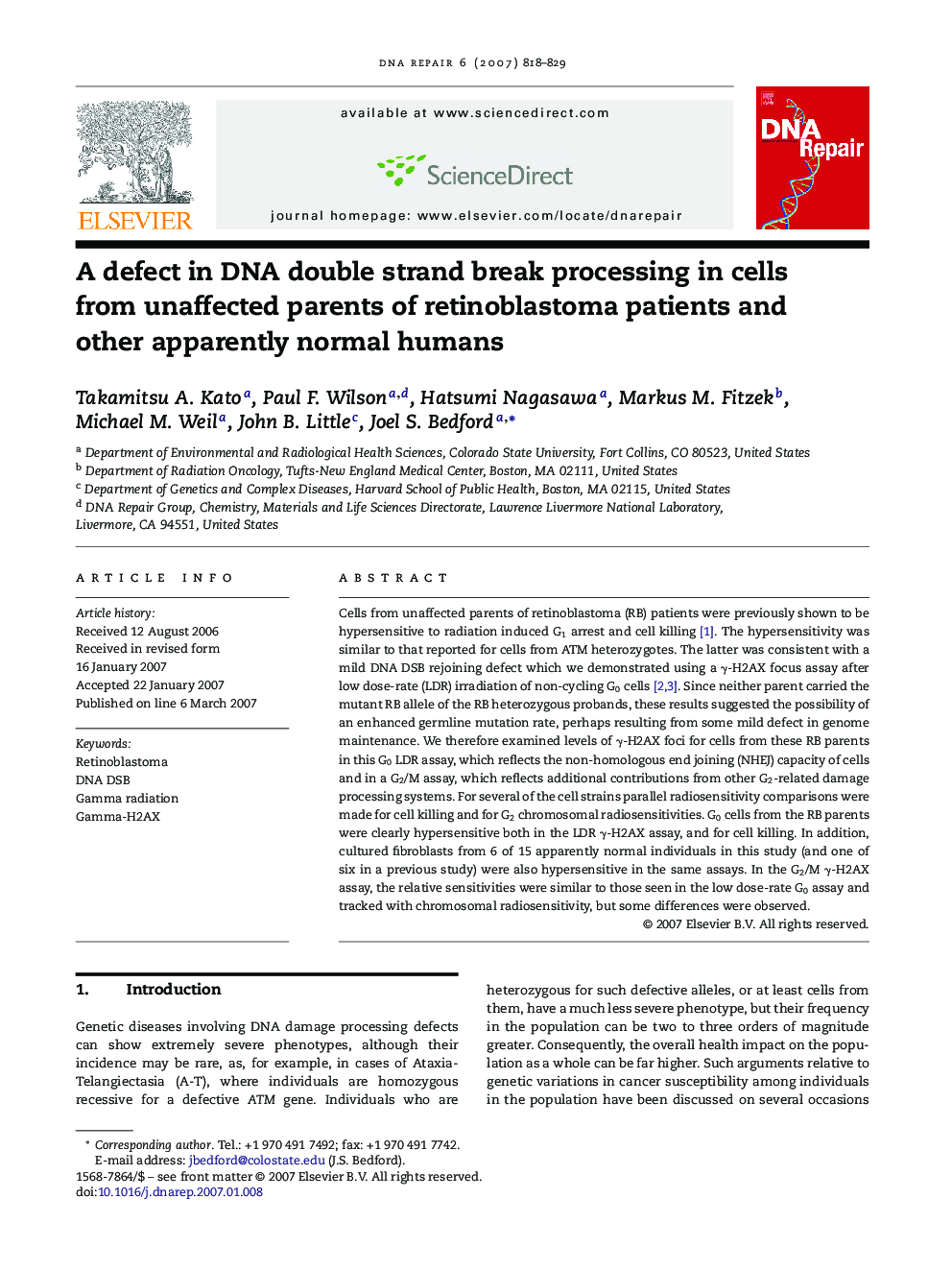| Article ID | Journal | Published Year | Pages | File Type |
|---|---|---|---|---|
| 1981358 | DNA Repair | 2007 | 12 Pages |
Cells from unaffected parents of retinoblastoma (RB) patients were previously shown to be hypersensitive to radiation induced G1 arrest and cell killing [1]. The hypersensitivity was similar to that reported for cells from ATM heterozygotes. The latter was consistent with a mild DNA DSB rejoining defect which we demonstrated using a γ-H2AX focus assay after low dose-rate (LDR) irradiation of non-cycling G0 cells [2] and [3]. Since neither parent carried the mutant RB allele of the RB heterozygous probands, these results suggested the possibility of an enhanced germline mutation rate, perhaps resulting from some mild defect in genome maintenance. We therefore examined levels of γ-H2AX foci for cells from these RB parents in this G0 LDR assay, which reflects the non-homologous end joining (NHEJ) capacity of cells and in a G2/M assay, which reflects additional contributions from other G2-related damage processing systems. For several of the cell strains parallel radiosensitivity comparisons were made for cell killing and for G2 chromosomal radiosensitivities. G0 cells from the RB parents were clearly hypersensitive both in the LDR γ-H2AX assay, and for cell killing. In addition, cultured fibroblasts from 6 of 15 apparently normal individuals in this study (and one of six in a previous study) were also hypersensitive in the same assays. In the G2/M γ-H2AX assay, the relative sensitivities were similar to those seen in the low dose-rate G0 assay and tracked with chromosomal radiosensitivity, but some differences were observed.
